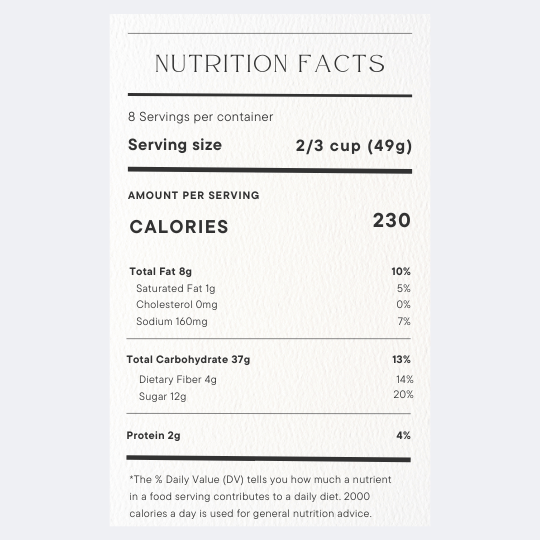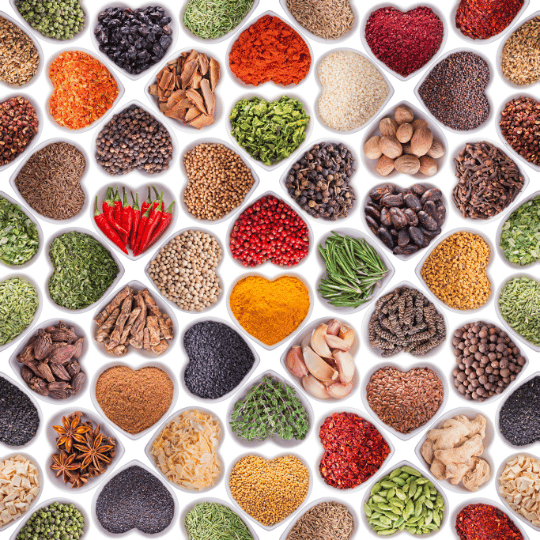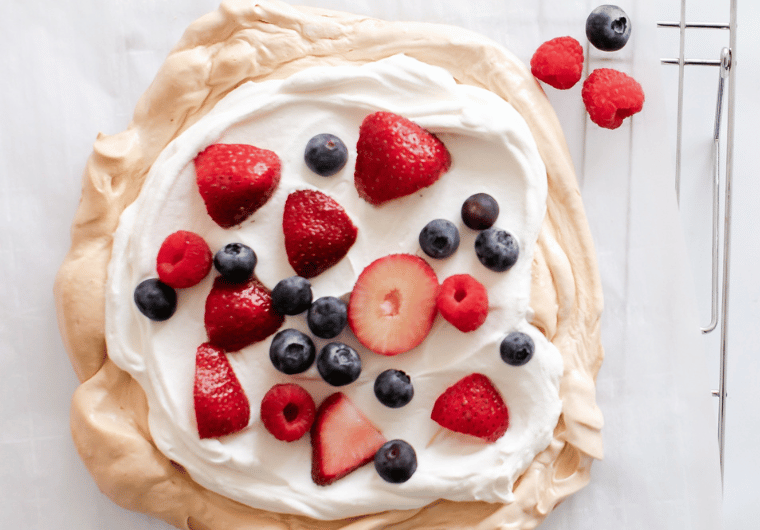How to Lower Your Sodium Intake: The Salty Truth

Learning how to lower your sodium intake is an often-overlooked issue that is important for a healthier lifestyle. We’re sandwiched between the convenience of pre-packaged high-sodium meals and deeply ingrained flavor expectations, making it challenging to reduce our daily intake. However, understanding why it matters and the practical steps to reduce it can lead to long-lasting health benefits.
In this post, we’ll explore how to lower your sodium intake without feeling deprived of flavor, decipher high-salt content in packaged goods, and find flavor alternatives. We’ll also learn how to craft savory, low-sodium meals and snacks that don’t compromise on taste. The salty truth is a lesson worth learning if you are determined to make life-changing adjustments to your sodium intake.
Disclaimer: The information provided in this blog post is for general informational purposes only. It is not intended as a substitute for professional advice, diagnosis, or treatment. Always seek the advice of your physician or other qualified health provider with any questions you may have regarding a medical condition or dietary needs. The author and the website disclaim any liability or loss in connection with the use of this blog post. Individual dietary needs and preferences may vary.
Understanding Sodium And Its Effects On The Body
Sodium is an essential electrolyte in the body, maintaining fluid balance and assisting nerve and muscle function. However, high sodium consumption contributes to hypertension, which is the leading cause of death worldwide. It does so by attracting and holding water, which increases blood volume in the cardiovascular system, adding strain on the heart.
Understanding Daily Sodium Intake Recommendations
The American Heart Association recommends no more than 2,300 milligrams of sodium daily. Yet, the average American consumes nearly double this amount. Global studies have consistently found that lowering salt intake reduces blood pressure and the incidence of heart disease and stroke.
Common Sources Of High Sodium In Our Diet
Processed and fast foods are the primary villains. They often contain alarming amounts of sodium to enhance flavor and act as a preservative. A single fast-food meal can surpass the daily recommended intake by itself.
Packaged and prepared foods are another major source of hidden sodium in our diets. These can include anything from your favorite canned beans and vegetables to a ready-made sandwich from a convenience store. Make it a routine to take an extra minute in your recipe prep to rinse your canned staples thoroughly.
Before you buy, look at the label. Opt for products with less than 140 milligrams of sodium per serving. Choose the “low sodium” or “no sodium added” option if available. It might seem like an insignificant change, but these swaps can significantly affect sodium consumption over time.
Condiments like soy sauce, ketchup, and salad dressings are often problematically high in sodium. A single tablespoon of soy sauce can have 61% of our recommended daily sodium intake, and who’s who’s asking for just one tablespoon?
You might need to shop around to find healthier options, but it is for your long-term health.

Tips For Reading Nutrition Labels
Navigating nutrition labels can be like reading a foreign language, but when learning how to lower your sodium it is important to know. The Nutrition Facts Label on food and beverage packaging is an essential tool for managing your sodium intake. This label provides information on the amount of sodium per serving and how this relates to the daily dietary recommendations (% Daily Value or %DV).

This food label indicates that there are 8 servings in this food container, with each serving size being ⅔ cups and containing 160 mg of sodium. If you want to have two servings of this food, you should multiply the sodium content by the number of servings: 160 mg x 2 = 320 mg of sodium. So, for two servings, totaling 1 ⅓ cups, the sodium content would be 320 mg. Always be mindful of the servings per container, serving size, and sodium content to determine the sodium intake in the food you consume. You can learn more about reading food labels on the U.S. Food and Drug Administration website.
Incorporating More Fresh Fruits and Vegetables Into Meals
One of the most effective ways to lower sodium is to increase your intake of fresh fruits and vegetables. These natural foods contain lower sodium levels and offer many health benefits beyond sodium reduction.
Incorporate a variety of vegetables into your meals. Roasting or steaming them brings out rich, natural flavors without adding salt. Ripe, juicy fruits can satisfy a sweet tooth without any added sodium, and they’re delicious and healthy snacks.
Using Herbs And Spices As Flavorful Alternatives To Salt In Cooking
One misconception is that reducing your sodium means sacrificing flavor. Herbs and spices are the perfect salt alternatives, each offering a unique taste that elevates your dishes in different ways.
Herbs like basil, cilantro, and thyme impart an earthy brightness to your meals. Meanwhile, the warmth of spices such as cinnamon, paprika, and cumin can transform basic ingredients into complex and satisfying flavors.
Other great options are adding garlic, which can be particularly satisfying in savory dishes, and adding citrus, such as a splash of lemon or lime juice, which can brighten up any dish and lend a zesty note.
Experiment with different combinations to find the perfect flavors for your palate.

Salty Options
Many salt substitutes are on the market for those who feel they can’t be without the salty kick. Some are made with potassium chloride or magnesium chloride, providing a salt-like taste without the sodium levels.
Low-sodium soy sauce is great for adding flavor to dishes without excess salt. While not significantly lower in sodium, sea salt blends offer different flavors and textures, potentially reducing overall usage.
However, some salt substitutes may pose risks for those with certain health conditions, so it’s best to consult a healthcare professional before switching.
Tips For Eating Out
Dining out can become overwhelming when you are learning how to lower your sodium intake. It’s easy to lose track of how much sodium you consume. Simple strategies can help you enjoy a delicious meal with less salt.
Before heading to a restaurant, look online to see if a menu is available. If you’re familiar with the menu or the type of cuisine, you can plan your meal in advance.
Look for dishes highlighting fresh vegetables, unprocessed proteins, and whole grains. Salads, vegetable side dishes, and lean cuts of meat or fish are excellent choices. Be mindful of sauces and dressings that often pack a sodium punch; ask for them on the side to control your intake.
Restaurant portions can be excessively large, which often means higher sodium content. Share a main course with someone or immediately box up half your meal. This not only helps manage your sodium intake but also aids portion control.
Low-Sodium Meals And Snacks That Are Still Tasty And Satisfying
Breakfast: Oatmeal with fresh berries.
Lunch: A colorful vegetable stir-fry with brown rice and a squeeze of lime.
Snack: Apple slices with almond butter.
Dinner: A lemon and herb-baked protein (salmon, chicken, etc.) with quinoa and steamed spinach.
Snack ideas: Unsalted nuts, celery with peanut butter, apple slices with almond butter, bananas with peanut butter, carrots with hummus, low-sodium cheese sticks, or Greek yogurt with berries.

Final Thoughts – How to Lower Your Sodium Intake: The Salty Truth
Learning how to lower your sodium intake can have numerous benefits for your overall health. Choosing fresh and whole foods instead of highly processed ones decreases your sodium intake and increases the nutrients and vitamins your body needs to function properly.
Additionally, remember that moderation is key when it comes to your sodium consumption; balance is crucial for maintaining a healthy lifestyle. Read food labels carefully, opt for low-sodium alternatives when possible, and be mindful of portion sizes.
Don’t be afraid to experiment with different herbs and spices to season your food instead of relying on salt. Your taste buds may thank you for the added flavors, while your body will thank you for the reduced sodium content. So, let’s take control of our health by reducing our sodium intake one step at a time! Do you have any tips you would like to share? Drop them in the comments below.
Disclaimer: The information provided in this blog post is for general informational purposes only. It is not intended as a substitute for professional advice, diagnosis, or treatment. Always seek the advice of your physician or other qualified health provider with any questions you may have regarding a medical condition or dietary needs. The author and the website disclaim any liability or loss in connection with the use of this blog post. Individual dietary needs and preferences may vary.
References
CFR – Code of federal regulations title 21. (2023, December 22). U.S. Food and Drug Administration. https://www.accessdata.fda.gov/scripts/cdrh/cfdocs/cfcfr/CFRSearch.cfm?fr=101.61
Here’s how fast food can affect your body. (2021, January 27). Cleveland Clinic. https://health.clevelandclinic.org/heres-how-fast-food-can-affect-your-body
How much sodium should I eat per day? (2024, January 5). www.heart.org. https://www.heart.org/en/healthy-living/healthy-eating/eat-smart/sodium/how-much-sodium-should-i-eat-per-day
How to reduce sodium intake. (2022, August 23). Centers for Disease Control and Prevention. https://www.cdc.gov/salt/reduce_sodium_tips.htm
How to understand and use the nutrition facts label. (2024, March 5). U.S. Food and Drug Administration. https://www.fda.gov/food/nutrition-facts-label/how-understand-and-use-nutrition-facts-label
Reducing sodium intake to reduce blood pressure and risk of cardiovascular diseases in adults. (2023, August 9). World Health Organization (WHO). https://www.who.int/tools/elena/interventions/sodium-cvd-adults
Shrimanker, I., & Bhattarai, S. (2023, July 24). Electrolytes. PubMed. https://pubmed.ncbi.nlm.nih.gov/31082167/
Strategies to reduce sodium intake in the United States. (2010). The National Academies Press. https://doi.org/10.17226/12818






Such an interesting reading. I rarely pay attention to the nutritional facts on the stuff I buy at the market. This just made me realize how little attention I pay to the food I consume. Thanks for this post!
This was quite informative. Thank you for sharing 😊
You’re very welcome! Thank you for taking the time to read and comment!
Such a useful article. I don’t like adding salt to my food or cooking. And always tell people to just add salt if they need it. But, of course, as you say eating out makes controlling sodium harder. I really should also be checking food labels when I buy ready made or canned products. I don’t do that so thanks for the reminder!
I’m so pleased to hear you found the article useful! Thank you for your comment.
Thanks for the great tips. I need to start lowering my sodium!
I’m really glad you found the tips useful! Thank you for your comment.
This was an interesting read and a very important one. The sodium intake is so high generally with everyone, that all should follow these tips. Thank you for this reminder!
I’m so glad you found the article both interesting. Thank you for taking the time to read and comment.
Thank you for these great tips on how to lower my sodium intake. I appreciate these helpful ideas to enjoy foods without feeling deprived of salty flavor.
Great tip on lowering sodium!
The salty truth is that there are so many hidden sodium in many of the convenience foods we eat today. I like how you explained the nutrition facts label. This will let your readers make more informed food choices around lowering their sodium intake. Great article 👏.
Though I am terrible at paying attention to the labels, I do try to incorporate as many fresh fruits, vegetables, and herbs as possible. Natural is always best. Thanks for sharing!
Eating out is certainly tricky when it comes to sodium content. We have started eating out much less as we get older. This puts control in our hands. Great read!
Thank you for sharing your thoughts! Eating out less really does make a significant difference in managing what goes into our meals. Glad you enjoyed the read!
Love this article, easy to read!
Thank you!
This was such an interesting and informative post. I didn’t realize just how much sodium is in certain foods and the effects it can have on our bodies. Also thanks for the tips on reading the nutritional labels. Thanks for sharing!